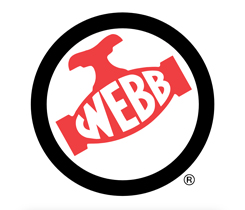Study compares market strength of alternative fuels in US
The National Renewable Energy Laboratory (NREL) conducted a study of the market strength of five alternative fuels in the United States, including propane. The others are electricity, biodiesel, E85 ethanol and compressed natural gas (CNG). A representative from each alternative fuel industry aided NREL in the study.
Of the five fuels, NREL reports that CNG has the strongest market potential as an alternative fuel, largely because sources of CNG are more widespread in the U.S. NREL adds that propane showed the least reliable results in the study because some data was lacking.
NREL reports that data pertaining to the operational locations and fuel types of heavy-duty vehicles was lacking for some categories, including propane. Additionally, representatives from the Propane Education & Research Council (PERC) told NREL that both Georgia and South Carolina have strong propane markets, which wasn’t reflected in the study.
PERC representatives say they told NREL it was beginning to document garage locations for heavy-duty vehicles that use alternative fuel, as propane-powered Blue Bird and Thomas Built buses are manufactured in this area. PERC says that Omaha, Neb., houses a large fleet of propane-powered school buses, though this is not reflected in the NREL survey. NREL says it will likely include that data for future studies.
Tucker Perkins, chief business development officer at PERC, says it’s just a “gap in the data,” adding that PERC tracks these numbers nationally, but not as closely on a state level. Perkins says the study also adds that NREL’s survey nearly doubled the average price of propane to $3.72 per gallon. Perkins says autogas prices are only tracked quarterly, so he says the data in the study is old.
“You think about the features [NREL] studied, I would argue [propane] should have rated in the top of almost all those categories,” Perkins says. “If you looked at the fine print on vehicle density, they didn’t allocate our vehicles well; they didn’t include a lot of buses.”
NREL reports that proximity of fueling stations was the most important indicator for market strength, followed by alternative fuel vehicle density, gasoline prices, state incentives, nearby resources and environmental benefits. NREL notes that CNG and propane vehicles were underreported in the vehicle density dataset, as they are often the products of aftermarket conversions or classified as dual-fueled vehicles.
The analysis reports that propane has stronger market potential in Indiana, Connecticut, California, Illinois, Washington, Pennsylvania, Texas, West Virginia, Ohio and Mississippi.
Although markets varied by state, NREL says that no state received “weak” potential overall to use an alternative fuel. According to the researchers, California, Illinois, Indiana, Pennsylvania and Washington seemed to have the best potential markets for alternative fuels, in general.
According to Perkins, though, he sees potential for autogas in the United States. He says he’s happy to see propane listed in a national study on clean fuels, arguing that only five years ago, propane might not even have been listed in this study. Perkins adds that 2015 should be an “interesting year” for autogas, with an overall collapse in propane pricing.
“We think an advantage of using propane over gasoline and diesel exists,” Perkins says. “We’re looking forward to capitalizing on that success.”
Perkins concludes that he thinks the survey put autogas in a favorable light.
“In general, it was a favorable study for us,” Perkins says. “But I feel good that propane showed so well to them, given that some of our largest sales vehicles were excluded from the study.”

















Texas has 25+ school districts operating their buses on propane.